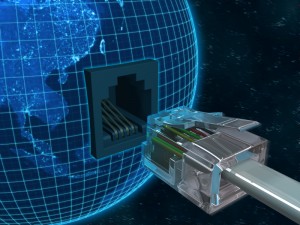Switching from Traditional Wired Systems to a Completely Networked Solution
New construction throughout the 70’s, 80’s, and well into the 90’s yielded the implementation many traditional wired systems that you currently see in some of the buildings today. Wired clock systems, intercom and paging systems, security systems, the list goes on. While many of these systems still continue to operate as we work through the 2010’s, many have failed and required replacement. Some might hang on with tinkering and frequent service and maintenance, but this will tend to drive the facility manager insane after some time. It’s this kind of situation that is bringing on the new wave of replacement systems: a completely networked solution.
Networked solutions for facilities are a great fix for the wired systems that no longer work properly. Unlike the old wired setup, networked systems all run under one LAN connection. This means that the systems are not all operating on their own personal infrastructure. For example, synchronized wired clock systems generally relied on their own run of wiring back to the master clock. With the new networked solution, IP clocks are able to connect to the facility’s existing network via Ethernet connection—allowing the clocks to communicate with either a time server on the network, or a master clock that is also connected to the network. While the clocks are receiving time corrections over the network, the security cameras, printers, and so on are all receiving their information and commands off of the same network. By consolidating the infrastructure required to operate all these different systems for a facility, there is less headache involved during the maintenance of these systems as well as installation.
Networked solutions can save the facility some money as well. For instance, during the installation of an IP clock, only one wire is necessary to both power and correct the clock for the right time (PoE versions). In comparison, wired systems normally require either one or two wires for correction, then another two for local power. This can significantly lower installation costs in regards to the purchase of wiring. In larger facilities, the cost rises as more and more wire is run throughout the building, so limiting the distance of wire used during installation can save some money for the building owner.
When the wired solutions installed in a building around 30 or 40 years ago start to decay and fail to work properly, quick-fix remedies will help the issue, but only temporarily. Even if replaced with refurbished devices, costs will eventually add up and surpass the price of a complete tear-out and replacement. When the calculations are made and the decision is final for a complete tear-out of the old wired systems within your building, make sure to weigh out the options of a completely networked solution. With the ability to run all the building’s systems off of one network infrastructure, costs are kept to a minimum, and maintenance is a breeze.

